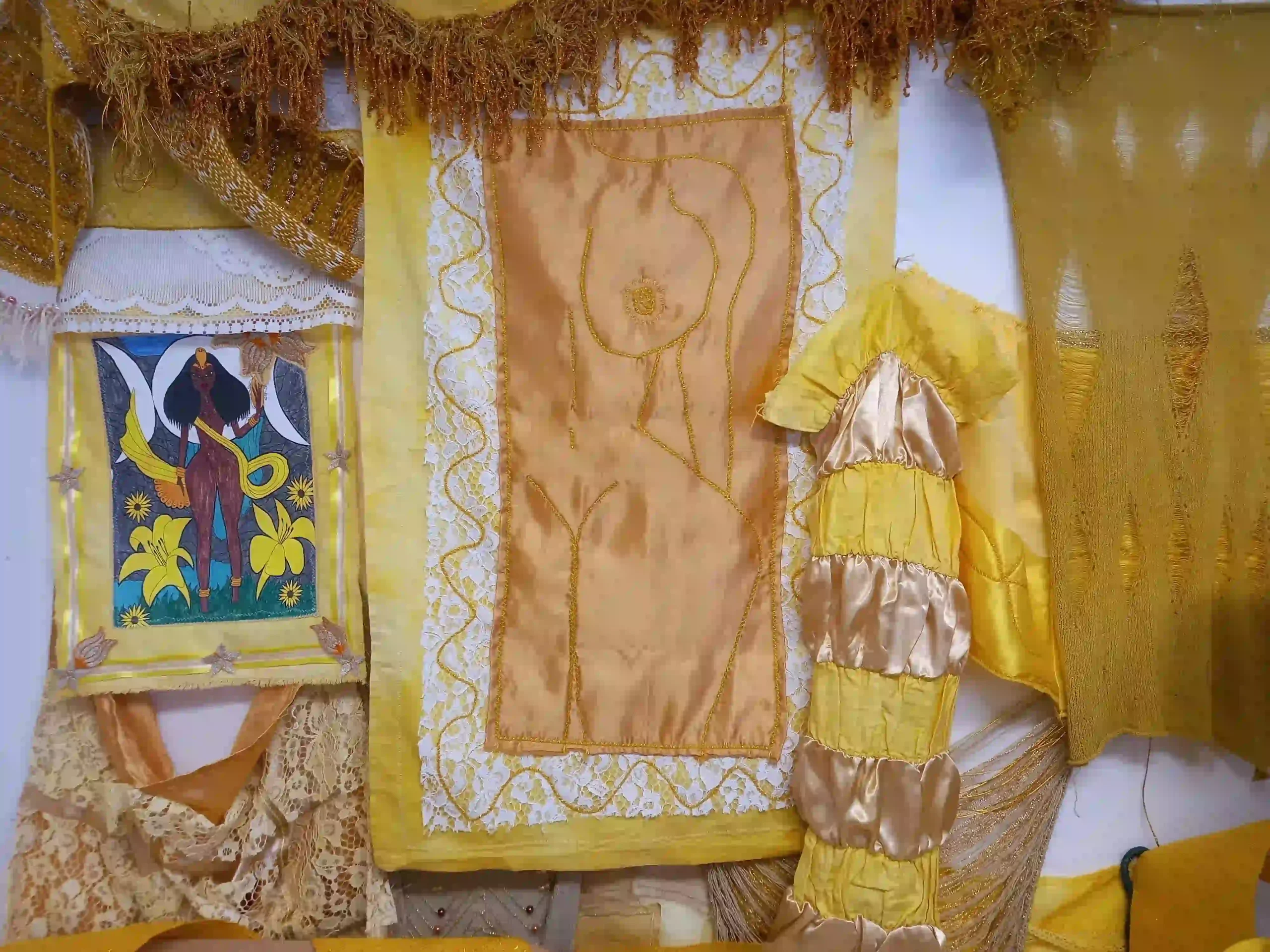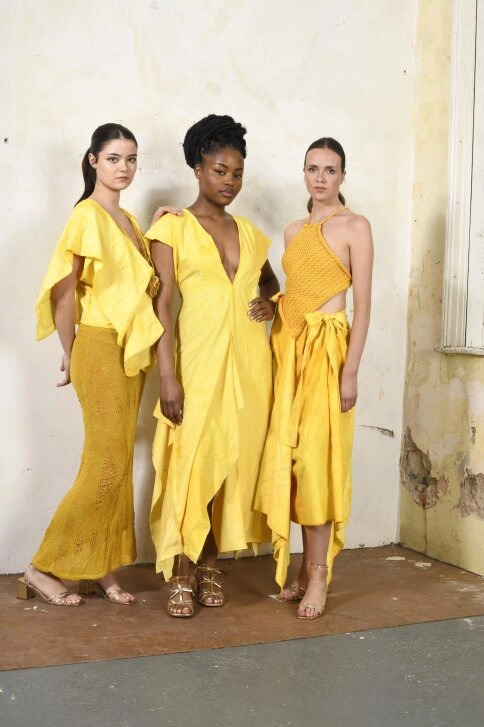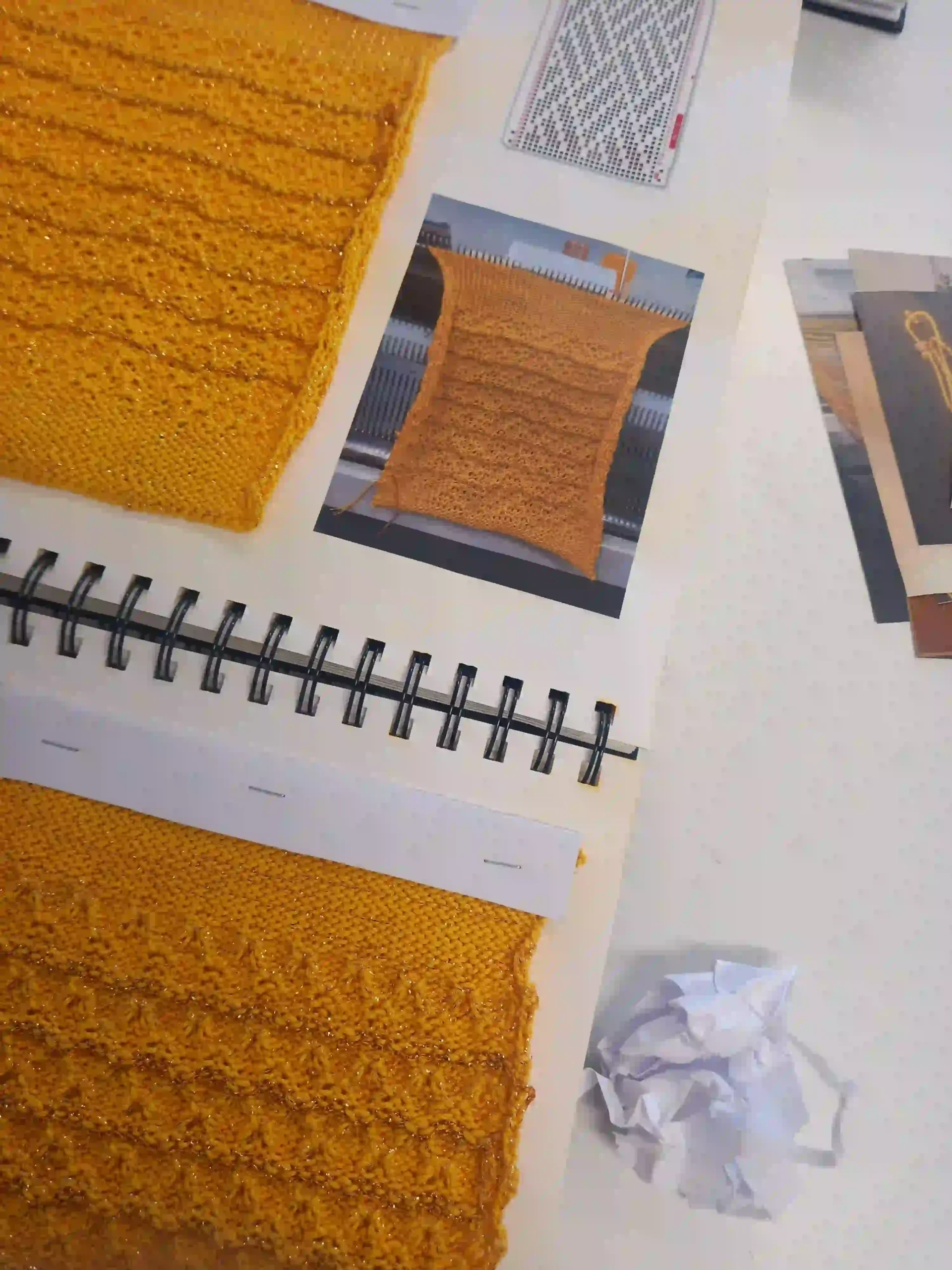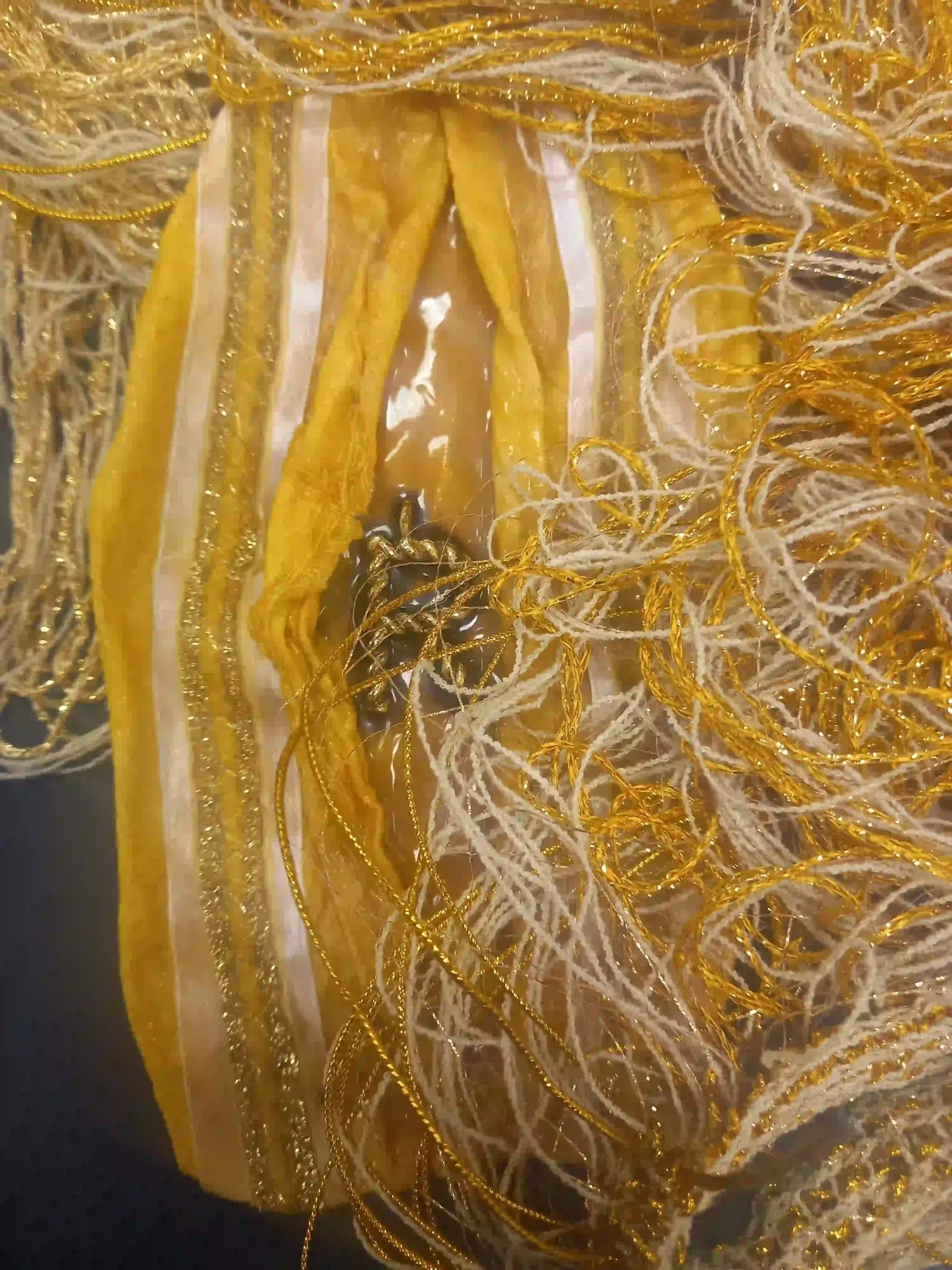Rachel
Osagie-Bayas




The Many Faces of Oshun
My graduate collection is inspired by a Nigerian orisha (deity) from Yoruba mythology known as Oshun, or Osun in the Yoruba language. The collection draws on my own Nigerian heritage along with other pre-colonial aesthetics. I am using zero-waste pattern construction that includes draping, which is found in many ancient cultures. I am using locally sourced materials such as organic cotton and linen, which are naturally dyed with turmeric to create the golden/yellow hue often associated with Oshun.
Traditional textiles that have been disregarded as “women’s work” such as weaving and knitting are combined with organic materials such as wool, linen and cotton to create textiles and garments that are feminine and celebrate womanhood and our divine link to nature. Not only am I returning to natural materials and heritage textiles with this collection, but I am also returning to matriarchal societies of the pre-Christian and pre-colonial world where women were honoured and protected. Ancient cultures understood the importance of protecting women and the planet, and it is time that we reclaim the values that were stolen from us by the same male-dominated civilizations that are responsible for the climate crisis we are currently facing.
“The Many Faces of Oshun” is a collection that reflects Oshun’s multifaceted nature and the various ways she is worshipped in different cultures. Each look represents a different aspect of Oshun’s persona. Gauzy turmeric-dyed knits represent Oshun’s sexual nature, while the couched linen represents her as a motherly figure and a protector of children. Mustard and gold weaves are a throwback to Oshun’s West African heritage, while cotton textured knits reflect how Oshun continues to thrive in contemporary Afro-Caribbean diasporic traditions. My decision to also incorporate latex into my textiles was influenced by female wetness and pleasure, along with Oshun’s association with rivers and freshwater.
